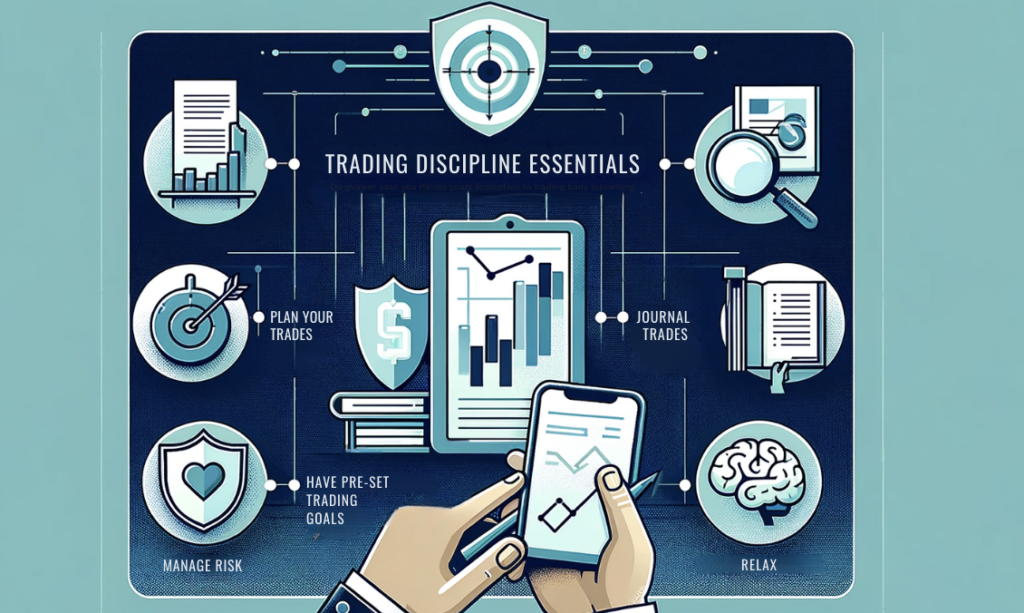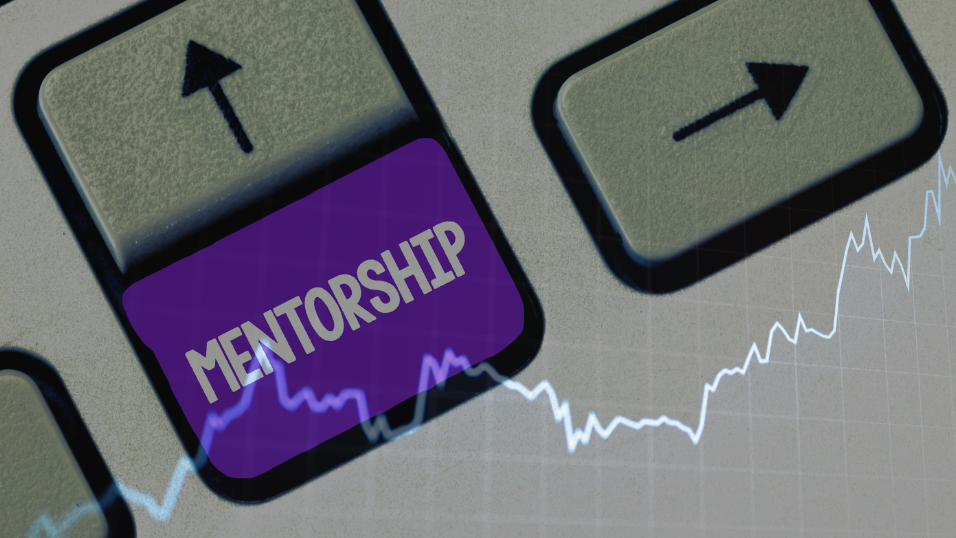15 Day Trading Lessons I Have Learned: A Guide to Success in the Fast-Paced World of Day Trading
Written by: Atanas Matov
Day trading can be an exciting yet challenging endeavor that offers the potential for significant profits in a short period of time. However, it also comes with substantial risks that must be properly managed.
Through years of experience in the fast-paced world of day trading, I have learned many invaluable lessons that have shaped my approach and mindset.
In this comprehensive guide, I will share 15 of the most important day trading lessons I have learned which aspiring traders can apply to develop their skills and potentially achieve consistent profitability.
Whether you are a complete novice or a seasoned veteran, these essential tips will provide a framework for navigating the turbulent markets and maximizing your chances of success.
Introduction
I still vividly recall the adrenaline rush of placing my first day trade. The speed at which profits could be made was thrilling, but so too were the rapid losses as the volatile market turned against me. Like many beginners, I lacked a structured approach and paid the price through costly mistakes. However, through dedicated study of technical analysis, market psychology, and risk management principles, I slowly transformed into a disciplined trader with a patient, calculated approach. Day trading appeals to those seeking to profit from short-term fluctuations in asset prices. The allure is strong, but so too are the risks. By internalizing the lessons outlined below, you can enhance your trading skills and potentially achieve lasting success.
Lesson 1: The Importance of Discipline and Patience
The single most important lesson I have learned is that successful day trading requires extensive discipline and patience. Profitable trades rely on unemotional, calculated decisions rather than impulsive reactions to market swings.

Establishing defined trading parameters, adhering to a structured plan, and resisting the urge to overtrade are essential. Patience is equally vital, as the most profitable trades often develop over hours or days, not minutes.
While losses are inevitable, maintaining composure and discipline, rather than panic selling during downturns, will improve long-term performance.
For more on this, see how daily meditation can improve your trading.
Lesson 2: Master Risk Management
Given the leverage provided by brokers, poor risk management can wipe out accounts in minutes. The most successful traders utilize strategies to limit losses on unprofitable trades while maximizing returns on winners.
This includes:
- Rigorously calculating position sizing based on account size and risk tolerance
- Utilizing stop-loss and take-profit orders on every trade
- Restricting total capital at risk on any single trade to 1-2%
By mastering risk management strategies, you can survive inevitability losses and protect your capital over the long-term. Do not overlook this critical lesson. A deeper understanding can be gained from the comprehensive article on support and resistance.
Lesson 3: Understand Market Psychology
Day trading is largely influenced by the overall psychology of market participants. Understanding concepts like fear, greed, speculation, and herd mentality can provide insights into emerging trends and volatility.
For example, trader anxiety typically increases during periods of high volatility. By maintaining composure and avoiding emotional trades, you can profit when others panic.
Learning to read the market’s psychological state and anticipate shifts in sentiment is an art form likely to take years to master.
The Zen of trading offers further insights into this aspect.
Lesson 4: Develop a Trading Plan
A comprehensive trading plan is essential for consistency. The plan should outline:
- The markets and assets you will trade
- Entry/exit criteria for trades
- Position sizing and risk parameters
- Technical analysis techniques
- Conditions under which you will stop trading and review performance
Rigorously adhering to your plan avoids impulsive decisions and ensures every trade aligns with your broader strategy. It also requires patience, research, and backtesting.
By developing a detailed plan matched to your skills and risk appetite, you can remove emotion from the equation during trading sessions.
Learn more about the importance of a trading plan in 3 ideas that boosted my trading career.
Lesson 5: Rigorous Research and Analysis

Every profitable trader I know attributes their success to rigorous research and analysis. This involves:
- Utilizing indicators like moving averages, volatility analysis, volume, RSI, and support/resistance levels
- Incorporating fundamental analysis e.g. earnings reports, analyst ratings, corporate actions
- Conducting due diligence on sectors, asset classes, or individual stocks
- Spotting macro-economic trends and global events that may impact markets
The most skilled traders can assimilate diverse data points into actionable insights on market direction. Research is a continuous process, so allocate time every week to updating your knowledge, analyzing charts, and identifying emerging opportunities.
For inspiration, check out 5 things Depeche Mode can teach about successful online trading.
Lesson 6: Backtesting and Simulation
Historical market data provides the opportunity to backtest potential strategies before risking real capital. Backtesting involves applying your trading rules, indicators, and risk management practices to past periods to evaluate viability.
I also recommend paper trading or simulation trading platforms to test strategies in real-time with virtual funds. This allows you to gain experience with real price feeds without the stress of actual capital at risk.
Rigorous backtesting and simulation enables refinement of strategies, improving the odds of success when live trading commences. It is a valuable tool I utilize on an ongoing basis. For more on this, explore how to battle the temptation to overtrade.
Lesson 7: Continuous Learning and Adaptation
The markets evolve continuously, with changing regulations, economic factors, and market dynamics. The most successful traders view learning as a lifelong endeavor and commit to ongoing education.
Key areas to focus on include:
- Staying up to date with financial news and macro-economic trends
- Learning emerging analytical techniques and trading tools
- Studying the strategies of successful peers
- Attending seminars and conferences to gain insights from experts
Adapting your trading style to evolving market conditions is also crucial. Remain flexible rather than rigidly clinging to one approach. For further reading, consider how to become a professional trader.
Lesson 8: Emotional Detachment
Trading decisions driven by emotion rarely end profitably. Fear, greed, excitement, ego and other feelings will undermine discipline. A detached, unemotional approach based on pre-defined parameters is essential.

Strategies I use to maintain emotional detachment include:
- Walking away from the screen during periods of high agitation
- Avoiding trades when feeling emotional or irrational
- Sticking to my trading plan and risk management rules
- Meditation and mindfulness exercises
Suppressing emotions entirely is unlikely. However, by developing self-awareness you can selectively avoid trading during heightened states of emotion.
Lesson 9: Diversification and Portfolio Management
Maintaining a diverse portfolio across asset classes, sectors, and geographical regions can help manage risk. For example, having positions in stocks, futures, forex, and commodities avoids overexposure to equities.
Effective portfolio management requires:
- Rebalancing periodically to maintain target allocations
- Limiting exposure to highly correlated assets
- Hedging against risks using instruments like options
- Taking profits from winning positions to fund underperformers with high conviction
Diversification cannot eliminate risk, but does ensure isolated events do not wipe out your capital. Portfolio management is an ongoing endeavor.
Lesson 10: Position Sizing and Capital Allocation
Determining optimal position sizing is challenging but critical. When starting out, I erred toward excessively large positions chasing quick profits. This resulted in several blowing up my account.
Now, no single trade represents more than 2% of my account value. This ensures no single loss significantly depletes capital. Core principles I follow include:
- Increase position size as account size grows
- Reduce size during volatile or low conviction periods
- Allocate more capital to strategies with proven profitability
- Set stop losses at 1-3% of position size based on volatility
Taking the time to determine judicious position sizing and capital allocation relative to your account size and risk tolerance will protect long-term profitability.
Lesson 11: Utilize Trading Journals and Performance Tracking
Recording trading activity, results, and insights in a journal and performance tracking spreadsheet is invaluable.
By quantifying factors like profit/loss per trade, win/loss ratio, position sizing and market conditions you can continuously refine your edge.
Analyze your data over weeks and months to identify:
- Your most and least profitable strategies
- Tendencies towards overtrading or emotional decisions
- Market conditions when you excel or underperform
- Positions you hold too long or exit prematurely
Addressing the weaknesses and biases revealed through tracking performance data will accelerate your learning curve vastly. Do not guess at where improvements are needed – follow the numbers.
Lesson 12: Seek Guidance and Mentorship

Attempting to master day trading solely through trial and error and self-study is sub-optimal. Seeking guidance from proven, profitable traders can shortcut your learning curve dramatically.
I have benefitted massively from mentorship, training programs, chat rooms, and mastermind groups with traders further along the journey. Joining a community of like-minded individuals provides:
- Real-time feedback on your developing strategies
- Collaborative learning
- Exposure to techniques outside your knowledge base
- Accountability, motivation and psychological support during drawdowns
Mentorship is a two-way street – be willing to provide value added as you progress in your capabilities.
Lesson 13: Embrace Technology and Trading Tools
Technology continues to evolve the realm of what’s possible in trading. Leverage technology to enhance your capabilities through steps like:
- Utilizing charting platforms with sophisticated analytical tools and real-time data feeds
- Seeking out trading algorithms and systems to augment discretionary trading
- Running statistical analysis on historical trades using Excel or proprietary platforms
- Accessing valuable trading communities and educational resources online
Additionally, leverage tools like trade automation, black box systems, and automatic order execution to eliminate emotional impulses. Technology, used prudently, can unlock your potential as a trader.
Lesson 14: Manage Expectations and Psychological Well-being
Maintaining perspective is crucial when you inevitably encounter strings of losses and failed strategies.
Expecting overly consistent profitability, especially early on, is unrealistic and will play havoc with your mental state when variance strikes.
Cultivating robust psychological well-being and realistic expectations protects against discouragement. Steps I take include:
- Viewing losses and drawdowns as tuition for my trading education
- Limiting financial obligations dependent on my trading income
- Maintaining hobbies, friendships and physical fitness outside of trading
- Periodic breaks from trading to reset and refocus
Profitable trading is a marathon, not a sprint. Focus on incremental progress and building robust strategies over years, not days.
Lesson 15: Continuous Improvement and Self-reflection
Complacency kills consistency. The most successful traders critique their own performance relentlessly to fuel improvement. Every week or month, set aside time for rigorous self-analysis by asking questions like:
- Which strategies underperformed and why?
- Did emotions drive any trades? If so, how can I avoid this?
- Was my risk management optimal?
- Are there gaps I need to address through further education?
Be intensely self-critical, but also acknowledge progress made. Continually refine your process through deliberate practice, analysis of market changes, and peer feedback. Commit to lifelong learning and evolution.
Conclusion
Day trading presents a complex set of challenges, but also the potential for attractive rewards. By studying the lessons of experienced traders, developing robust strategies, and committing to ongoing self-improvement, you can progressively master this competitive arena. My hope is the 15 lessons summarized above will accelerate your learning curve and provide a framework to unlock your potential.
The key takeaways include:
- Success requires extensive patience and discipline
- Managing risk through methods like stop losses and position sizing is critical
- Mastering market psychology provides an edge
- Rigorously researching, backtesting, and analyzing trades leads to refinement
- Adopting a detached emotional state avoids impulses
- Technology and tools complement discretionary trading
- Mentorship and guidance shorten the learning curve
- Psychological resilience and realistic expectations are vital
I encourage you to experiment, analyze your results, adapt your strategies, and learn from your mistakes. Persist through tough periods and draw motivation from incremental improvements.
With the drive for mastery and commitment to continuous education, you can become a consistently profitable trader.
The journey will challenge you immensely, but also offers immense rewards. I wish you the best of luck as you apply these lessons on your path towards success. Please reach out if you need any guidance at all as you progress along your way.
Happy trading,
Colibri Trader
P.S.
Have you read my recent article on 15 Tips to Grow a Small Trading Account





